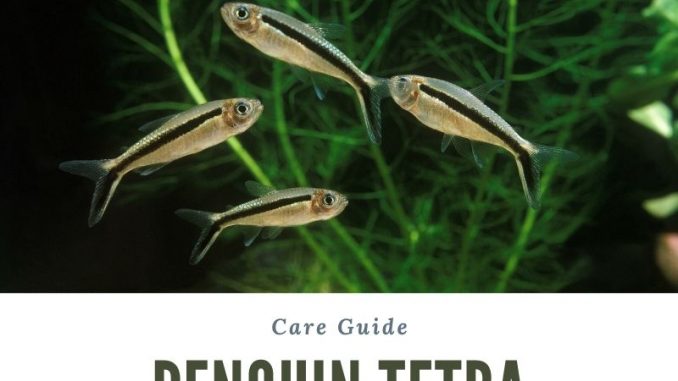
Penguin tetras are fun schooling fish to keep. They are active fish that get along peacefully with other penguin tetras and other species that are calm and similar in size.
With the signature black band that runs across their whole body and their unique half-upright swimming style, they are entertaining; they are also adaptable to varying water parameters, so they’re easy to care for and compatible with many different species.
Although they can handle varying temperatures and pH, they don’t tolerate high levels of ammonia, nitrite, and nitrate, so keeping the water clean is a must. You’ll want to keep them in groups to reduce their nipping tendencies.
TABLE OF CONTENTS
Penguin Tetra Facts & Overview
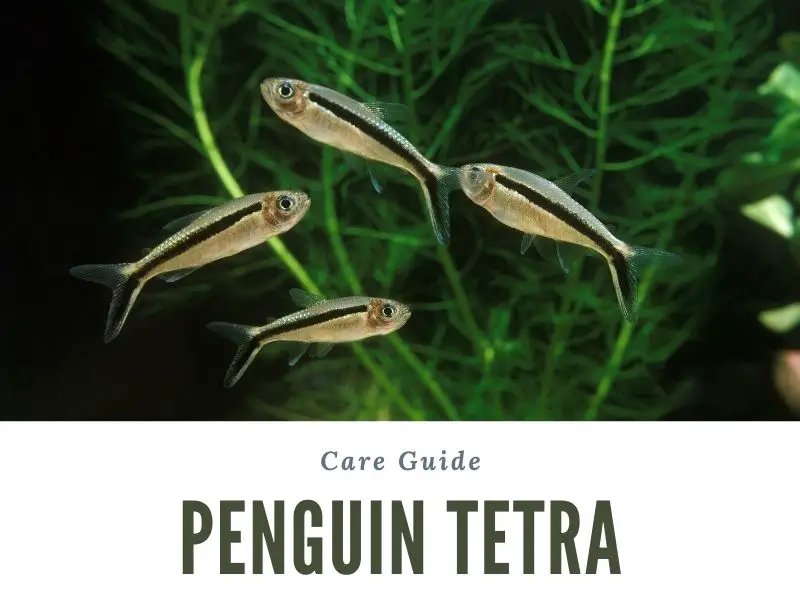
| Category | Rating |
| Care Level: | Easy |
| Temperament: | Peaceful |
| Color Form: | White and silver translucent with black stripe |
| Lifespan: | 3-5 years |
| Size: | 3 inches |
| Diet: | Omnivore |
| Family: | Characidae |
| Minimum Tank Size: | 20 gallons |
| Tank Set-Up: | Freshwater with plants |
| Compatibility: | Peaceful commnunity |
The penguin tetra is native to Peru and Brazil, found in the upper Amazon basin’s backwaters, flood plains, and tributaries. Penguin tetras (scientific name Thayeria boehlkei) are micro predators that feast on small crustaceans, insects, and worms.
They seek refuge from larger predators in lush plants and tree roots. These jungle conditions also provide them with cover from direct light. Although the penguin tetras that you’ll find for your home tank are bred in captivity, they share the same proclivity for live protein, dense greenery, and dim lighting, so you should recreate these conditions in your home aquarium.
Penguin tetras are excellent community members; they are easygoing and peaceful, yet active and friendly swimmers. It looks very cool when a larger school is all swimming in their unique partially-upright style.
Other common names for penguin tetras include blackline penguin fish and hockey stick tetra. They have a lifespan of 3 to 5 years, and range in size from 1.5 to 3 inches (3.8 to 7.6 cm).
Typical Behavior
Aside from their unique swimming position, penguin tetras are most known for being fin nippers. Don’t let that trait put you off them, though. The truth is that their nipping is nonexistent or greatly reduced when you keep them in a group.
Penguin tetras are schooling fish to the core, and are less fearful and defensive when they are in a group. When they are content in a group, they are less likely to lash out and nip at other fish.
However, it’s hard for penguin tetras to resist a flowing fin, so you may want to skip fish with flowing tails unless you have a large enough tank that they can keep their distance.
Appearance
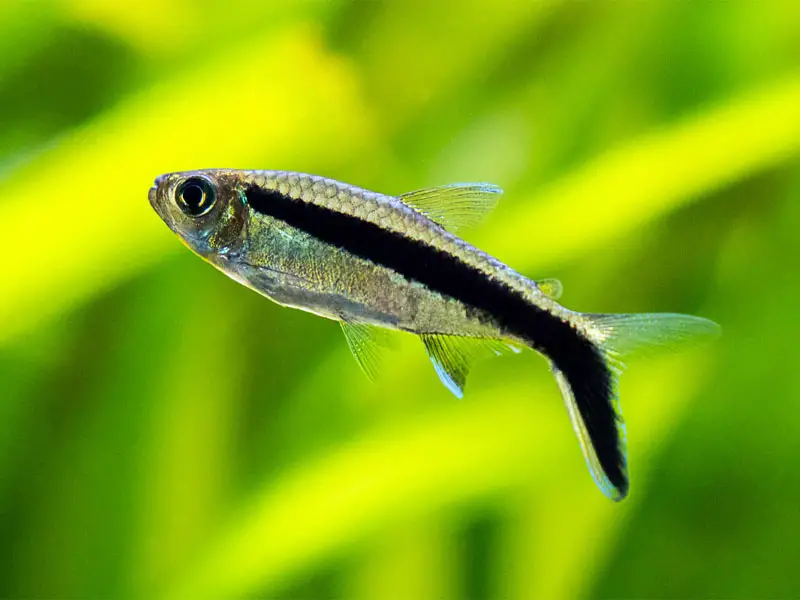
Recognizable by their signature black stripe that begins behind their eye and goes all the way down their body, penguin tetras are also easily spotted by their swimming style. Instead of swimming horizontally, they swim in a partially upright position. Their bodies are white or olive, and they have translucent silver bellies.
There is not much to distinguish the males from the females, but the females do sport a rounder belly, more noticeable when they are ready to spawn. The males are more brightly colored, as well.
Habitat and Tank Conditions
Penguin tetras are middle to top inhabitants, so the substrate is not of the greatest import, but sand or small pebbles would be a good choice. Heavy planting is a must for these jungle dwellers; as I mentioned, dense planting protects them from both bright light and predators.
Offering lots of plants and tree roots or driftwood will decrease stress and increase contentment. Remember, though, that penguin tetras are active schooling fish that love to swim, so you want to make sure they have sufficient space to swim. One idea is to plant along the walls of the tank so that the school has room to swim.
You can also tint the water to resemble the brown water they are accustomed to in their natural habitat. You can achieve this brown stain by adding dried leaves on the top of the substrate. Don’t forget to change them out every two weeks when you are performing partial water changes; if you leave the leaves to rot, this will increase ammonia, nitrites, and nitrates, which penguin tetras can’t tolerate.
Water Conditions
Penguin tetras can tolerate a wide range of water parameters, but are sensitive to water quality and demand impeccably clean water.
Any penguin tetra that you welcome into your tank will have been bred in captivity for adaptability. They are not picky about water hardness or softness, nor acidic or alkaline. But don’t skimp on the water changes, and test for ammonia, nitrites, and nitrates, as they are sensitive to those levels.
The optimal parameters for penguin tetras are:
- pH levels: 6.0 to 8
- Water hardness: 5 to 20 dKH
- Water temperature: 72°F to 82°F (22-28°C)
What Size Aquarium Do They Need?
You need at least a 20-gallon tank for penguin tetras, but I recommend 30 gallons, especially depending on the size of your school and other fish in the tank.
Tank Mates
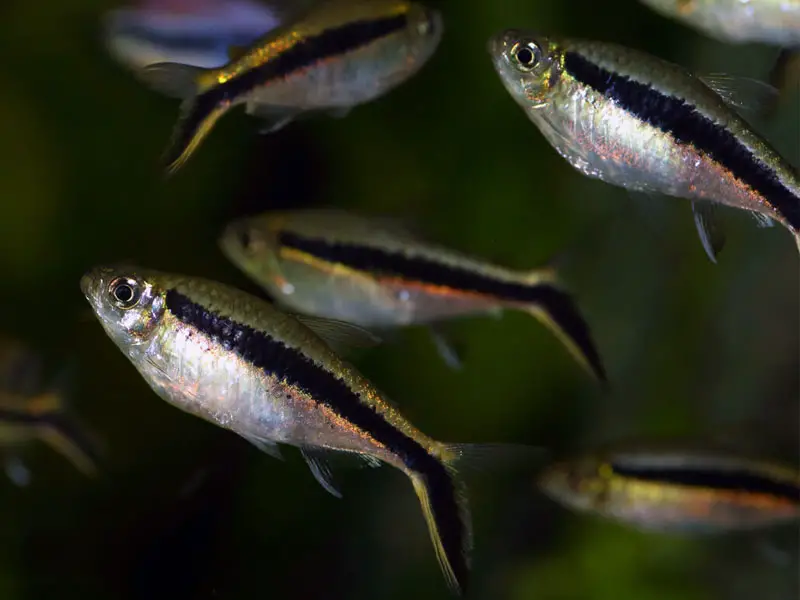
Penguin tetras do best with other calm and peaceful schooling fish. They will even interact with other schools of other species. They don’t do well with fish that are aggressive or too spirited.
Stay away from angelfish, guppies, Siamese fighting fish, and other long-finned fish. Penguin tetras have difficulty resisting beautiful flowing fins.
In order to protect your penguin tetras, you should avoid housing them with large and aggressive fish that will eat them.
Suitable tank mates for penguin tetras include:
- Black skirt tetras
- Blind cave tetras
- Bloodfins
- Buenos Aires tetras
- Cherry barbs
- Clown loaches
- Congo tetras
- Corydoras
- Diamond tetras
- Dwarf cichlids
- Dwarf gouramis
- Emperor tetras
- Flame tetras
- GloFish
- Harlequin rasboras
- Head-and-tail-light tetras
- Iridescent sharks
- Kuhli loaches
- Lemon tetras
- Loricariids
- Mollies
- Oto catfish
- Pearl gouramis
- Platies
- Redeye tetras
- Red tail sharks
- Rosy barbs
- Serpae tetras
- Silver dollars
- Silver hatchetfish
- Silvertip tetras
- Small cichlids
- Swordtails
- Zebra danios
Keeping Penguin Tetras Together
Penguin tetras are schooling fish and should be kept in a school of at least 6 fish.
Diet
Penguin tetras are micro predators and in the wild will consume crustaceans, insects, larvae, and worms. In captivity, they will eat prepared fish food in flake, freeze-dried, or pellet form, but they will be happy with treats and supplements of freeze-dried, frozen, or live foods like bloodworms, brine shrimp, and tubifex.
They are omnivores, so they should also get some algae for a balanced nutritional load.
Build up their immune system by mixing greens and protein, which will provide them with the proper balance of minerals and vitamins. To avoid excess waste and skewed water parameters, feed them 2 or 3 times a day with only as much as they can consume in 3 minutes.
Care
Keeping your tank clean and performing regular checks of the water parameters will help ensure that your penguin tetras live the longest and healthiest life possible.
Mitigate stress by keeping them surrounded by peaceful fish that are similar in size, and make sure to surround them with friends.
Of course, despite your best efforts, penguin tetras are at risk for the usual fish diseases, like Ich (also called Ick) and gill and skin flukes. Ich is a highly contagious parasitic infection noticeable by the white spots that will appear on your fish. Ich is highly contagious and can be fatal if not treated promptly. You should quarantine the affected fish and administer an over-the-counter medication for Ich.
Gill and skin flukes are identifiable by pieces of fins and gills eaten away by the parasite that infects them. You’ll also notice in both Ich and flukes that your fish will be scratching against anything they can find in the tank. You can treat flukes with an anti-parasite.
Breeding
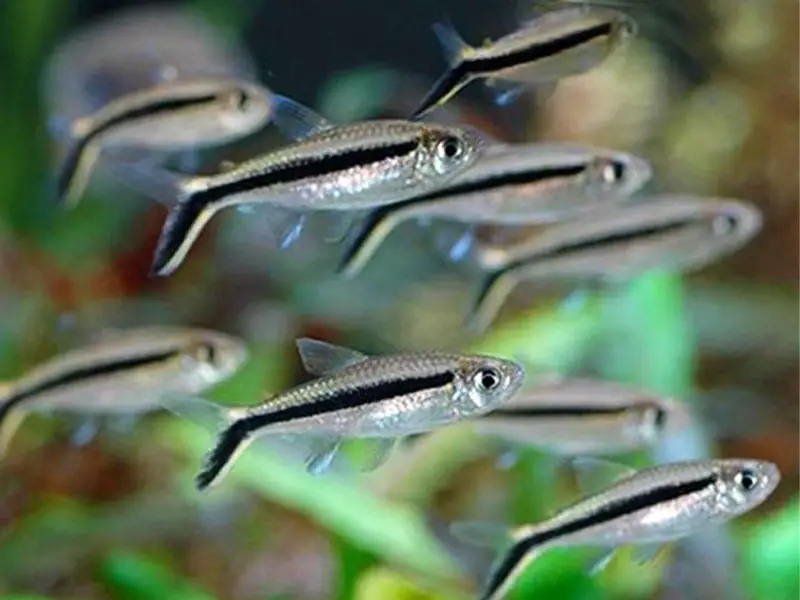
If you’re interested in breeding penguin tetras, you’ll need a separate spawning tank. You’ll notice that the female bellies will get fuller when she is ready to breed.
Although penguin tetras are amenable to different water parameters, when it is time to breed, they prefer water that is softer and slightly acidic.
As with most egg scatterers, the parents have a tendency to eat the eggs and the fry, so you’ll want to add a mesh liner that the eggs can drop through but the parents can’t get to. You could also use a spawning mop or plant where the eggs can settle.
Either way, you’ll want to remove the parents from the spawning tank as soon as you see eggs.
And you’ll have a lot of eggs. Female penguin tetras can lay up to 1000 eggs per cycle. These eggs will hatch within a day and become free swimming in about 4 days.
Are Penguin Tetras Suitable for your Aquarium?
A school of penguin tetras swimming around your tank with their striking black stripes on translucent bodies is something to behold. If you have a community tank of peaceful inhabitants, I recommend a small (or large!) school of penguin tetras.
You’ll be entertained with their swimming and how they swim partially upright. Because these fish are adaptable to a variety of water conditions, you can keep them with many different types of fish.

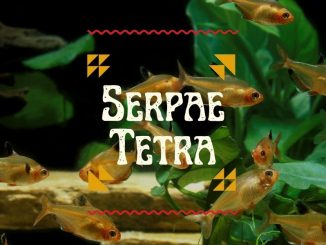
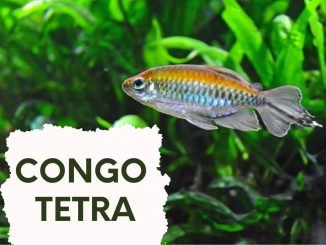
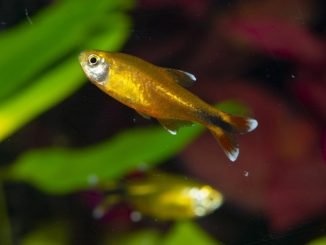
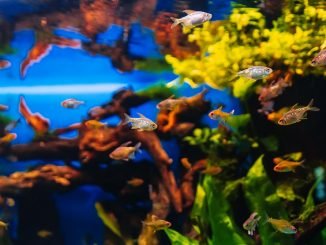
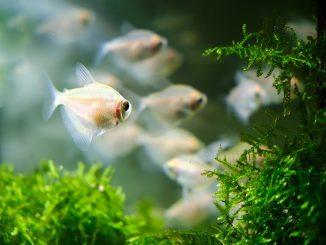
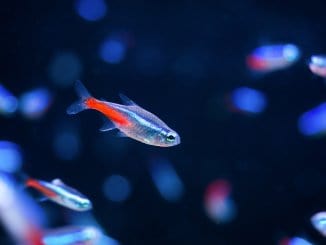
Be the first to comment